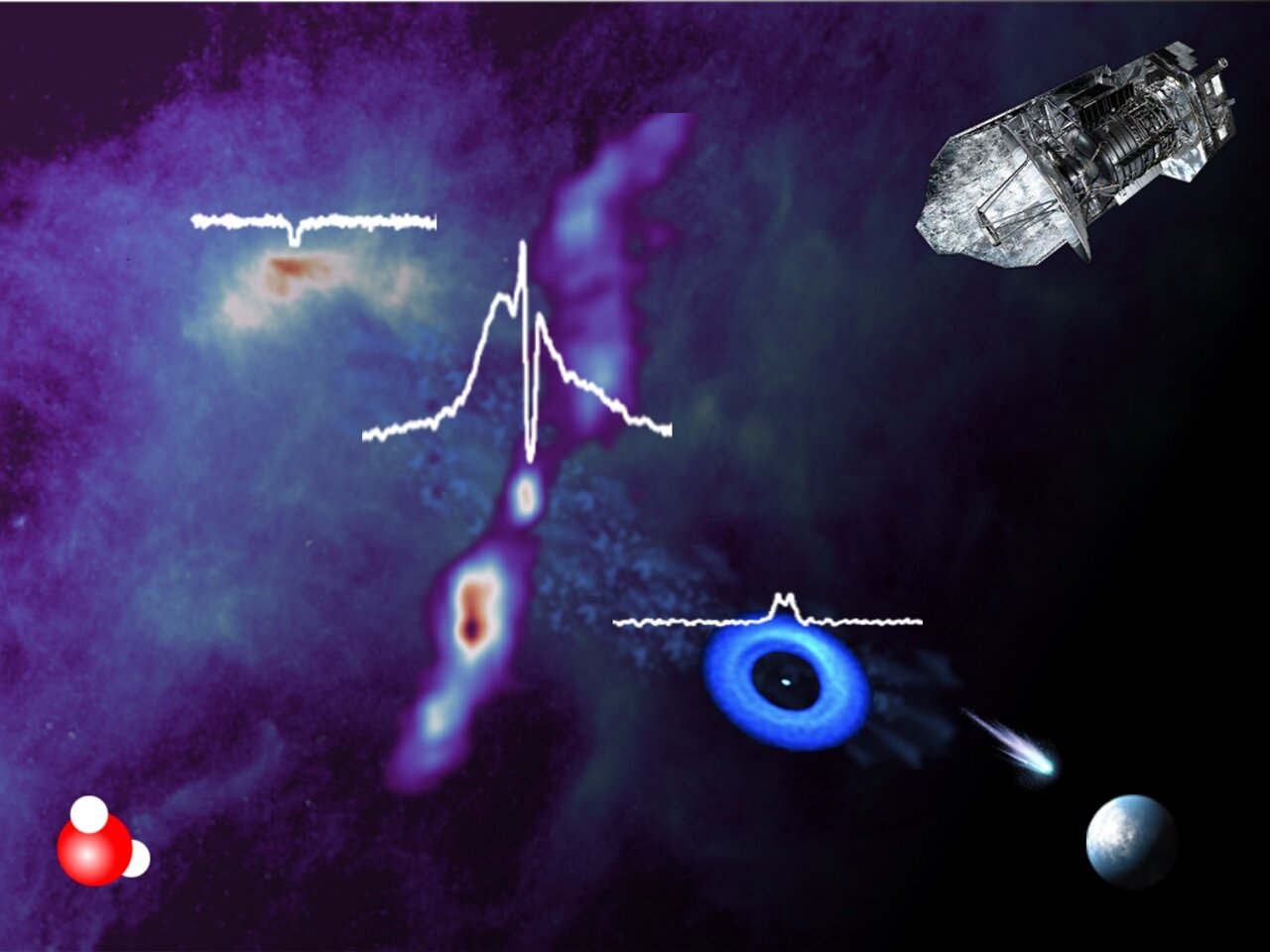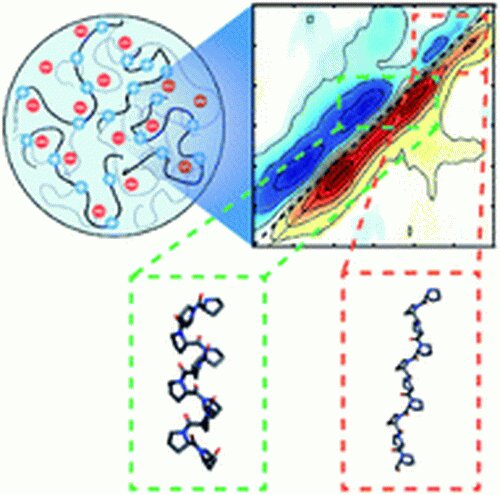#Long-awaited review reveals journey of water from interstellar clouds to habitable worlds

“#Long-awaited review reveals journey of water from interstellar clouds to habitable worlds”

Dutch astronomer Ewine van Dishoeck (Leiden University, the Netherlands), together with an international team of colleagues, has written an overview of everything we know about water in interstellar clouds thanks to the Herschel space observatory. The article, published in the journal Astronomy & Astrophysics, summarizes existing knowledge and provides new information about the origin of water on new, potentially habitable, worlds. The article is expected to serve as a reference work for the next twenty years.
How and where water is formed in interstellar space and how it eventually ends up on a planet like Earth was not well understood 10 years ago. One reason for this is that observations made with ground-based telescopes are affected by water vapor in our own atmosphere. In 2009, ESA launched the far-infrared space telescope Herschel. One of Herschel’s main goals was to research water in space. Herschel was in service until 2013. Of particular importance was the HIFI instrument built under Dutch leadership, also known as the ‘molecule hunter.” In recent years, dozens of scientific articles have been published based on Herschel’s water data. Now these results have been combined and expanded with new insights.
The new study describes the journey of water throughout the star formation process, including the intermediate stages which , until now, had received less attention. The paper shows that most of the water is formed as ice on tiny dust particles in cold and tenuous interstellar clouds. When a cloud collapses into new stars and planets, this water is largely preserved and quickly anchored into pebble-sized dust particles.. In the rotating disc around the young star, these pebbles then form the building blocks for new planets.
Furthermore, the researchers have calculated that most new solar systems are born with enough water to fill several thousand oceans. Ewine van Dishoeck: “It’s fascinating to realize that when you drink a glass of water, most of those molecules were made more than 4.5 billion years ago in the cloud from which our sun and the planets formed.”
Many of the earlier Herschel results focused on the hot water vapor that is prominently seen and copiously produced near forming stars. But that hot water is lost to space by the powerful outflows from the young star. Whilst writing the review, the researchers gained more and more insight into the chemistry of the cold water vapor and ice. For example, they were able to show that interstellar ice grows on dust particles layer by layer. They based this conclusion on the weak signals from heavy water (HDO and D2O instead of H2O).
In the future, researchers hope to be able to study more water in the universe, particularly in forming planetary systems. However, that might take a while. The next space telescope comparable to Herschel is planned to launch no earlier than 2040. Ewine van Dishoeck: “There was a chance that a ‘water telescope’ would go into space around 2030, but that project was canceled. That is a pity, but it was an extra reason for our team to write the water overview. In that way we have a collective memory for when a new mission comes along.”
Moreover, at the end of 2021, the James Webb space telescope will be launched. It will contain the MIRI instrument, built by European-US partnership, which will be able to reveal a part of the water roadmap that has remained out of reach until now. MIRI will be able to detect warm water vapor in the innermost zones of dust disks. Co-author Michiel Hogerheijde (Leiden University and University of Amsterdam): “Herschel has already shown that planet-forming disks are rich in water ice. With MIRI we can now follow that trail into the regions where Earth-like planets are formed.”
The ALMA telescopes in Chile can observe water vapor in space from the ground. This includes water in distant galaxies where the water lines have shifted away from those in the Earth’s atmosphere. Co-author Lars Kristensen (University of Copenhagen, Denmark) adds: “Thanks to Herschel’s legacy, we can interpret these ALMA data much better.”
“Water in star-forming regions: Physics and chemistry from clouds to disks as probed by Herschel spectroscopy” has been accepted for publication in Astronomy & Astrophysics.
The Milky Way may be swarming with planets with oceans and continents like here on Earth
Water in star-forming regions: Physics and chemistry from clouds to disks as probed by Herschel spectroscopy. By Ewine F. van Dishoeck et al. Accepted for publication in Astronomy & Astrophysics, 2021. www.aanda.org/10.1051/0004-6361/202039084
Free preprint: arXiv:2102.02225v1 [astro-ph.GA] arxiv.org/abs/2102.02225
Citation:
Long-awaited review reveals journey of water from interstellar clouds to habitable worlds (2021, April 9)
retrieved 9 April 2021
from https://phys.org/news/2021-04-long-awaited-reveals-journey-interstellar-clouds.html
This document is subject to copyright. Apart from any fair dealing for the purpose of private study or research, no
part may be reproduced without the written permission. The content is provided for information purposes only.
If you liked the article, do not forget to share it with your friends. Follow us on Google News too, click on the star and choose us from your favorites.
For forums sites go to Forum.BuradaBiliyorum.Com
If you want to read more Like this articles, you can visit our Science category.




